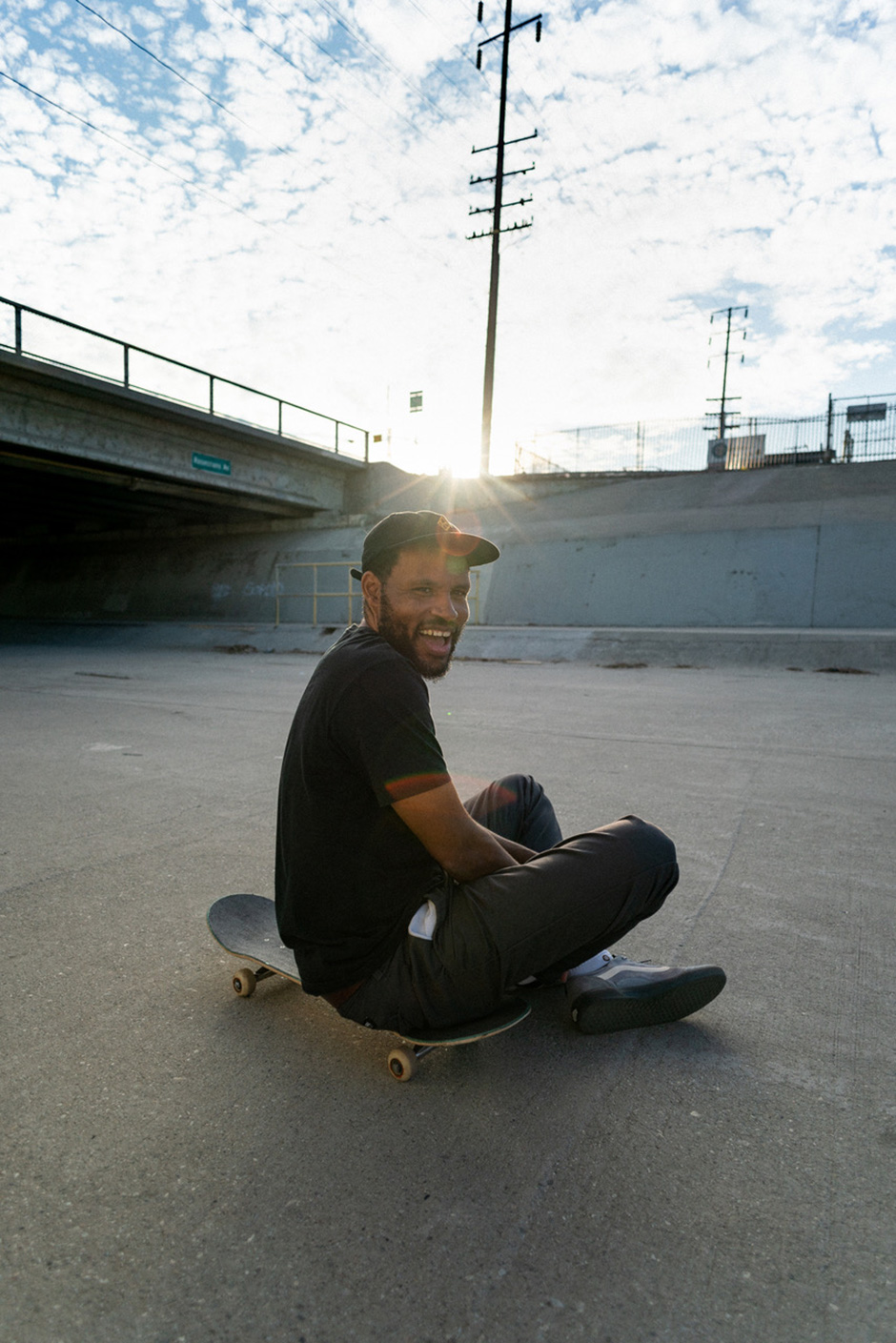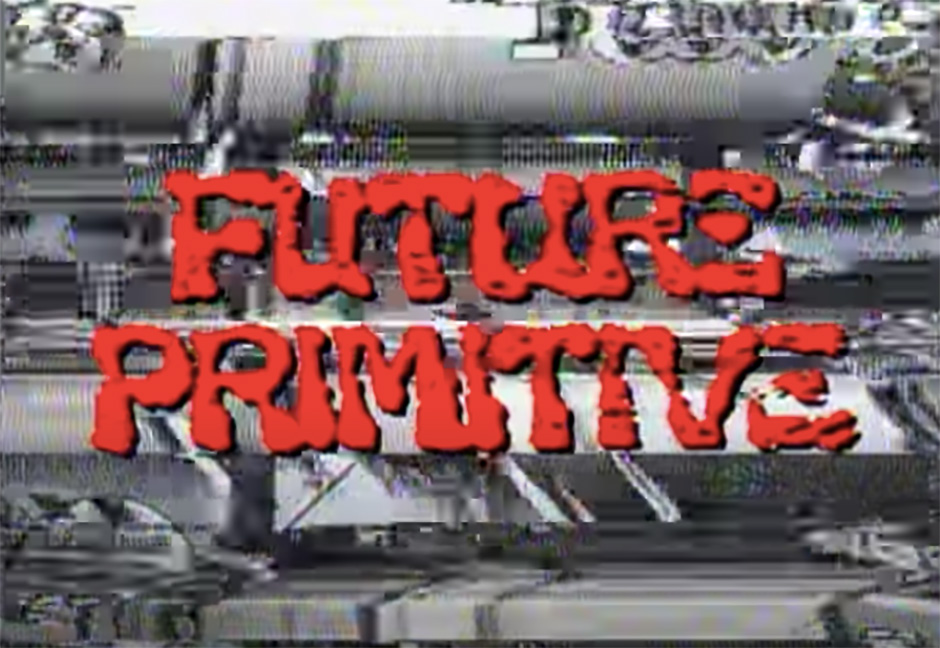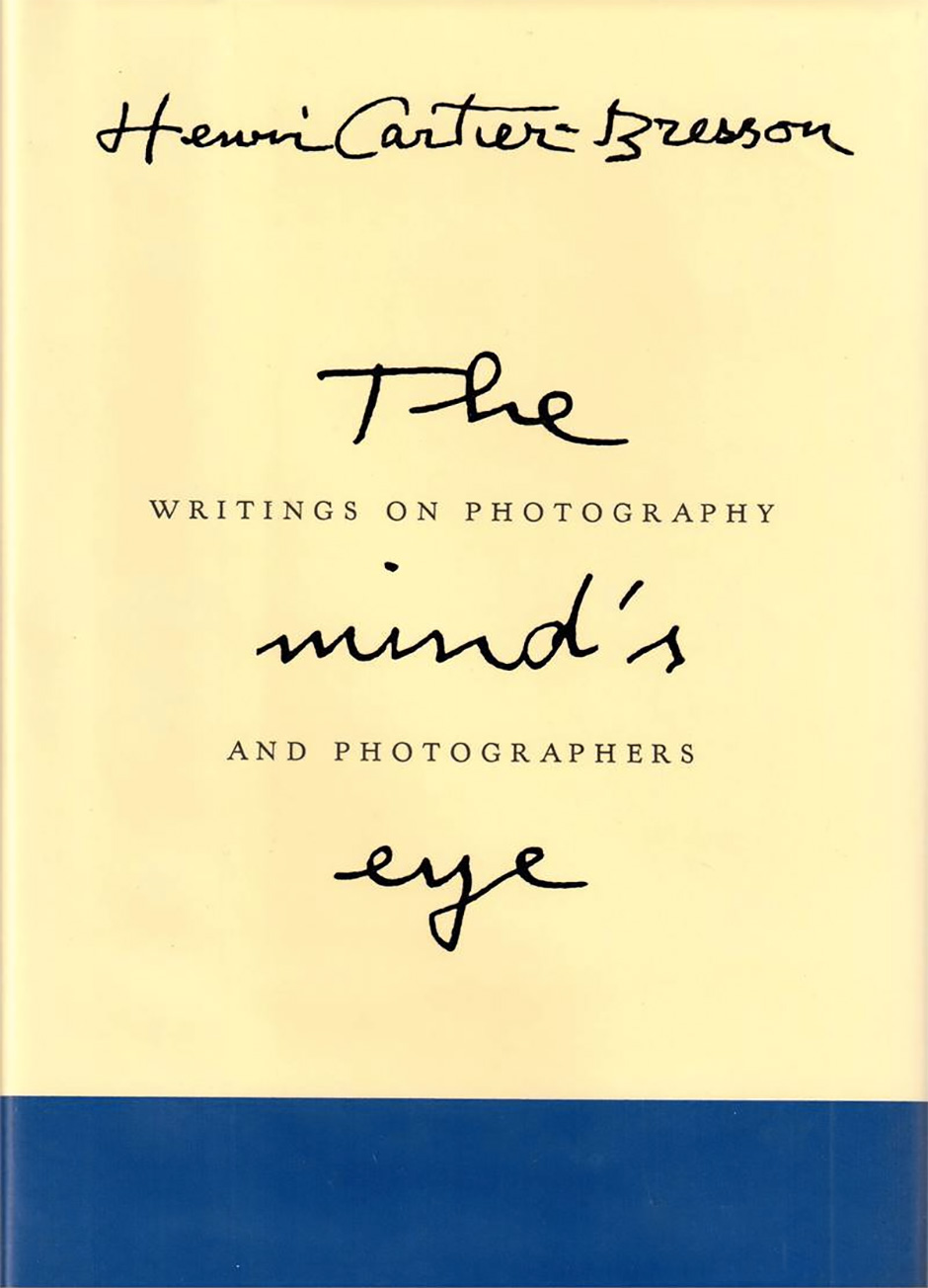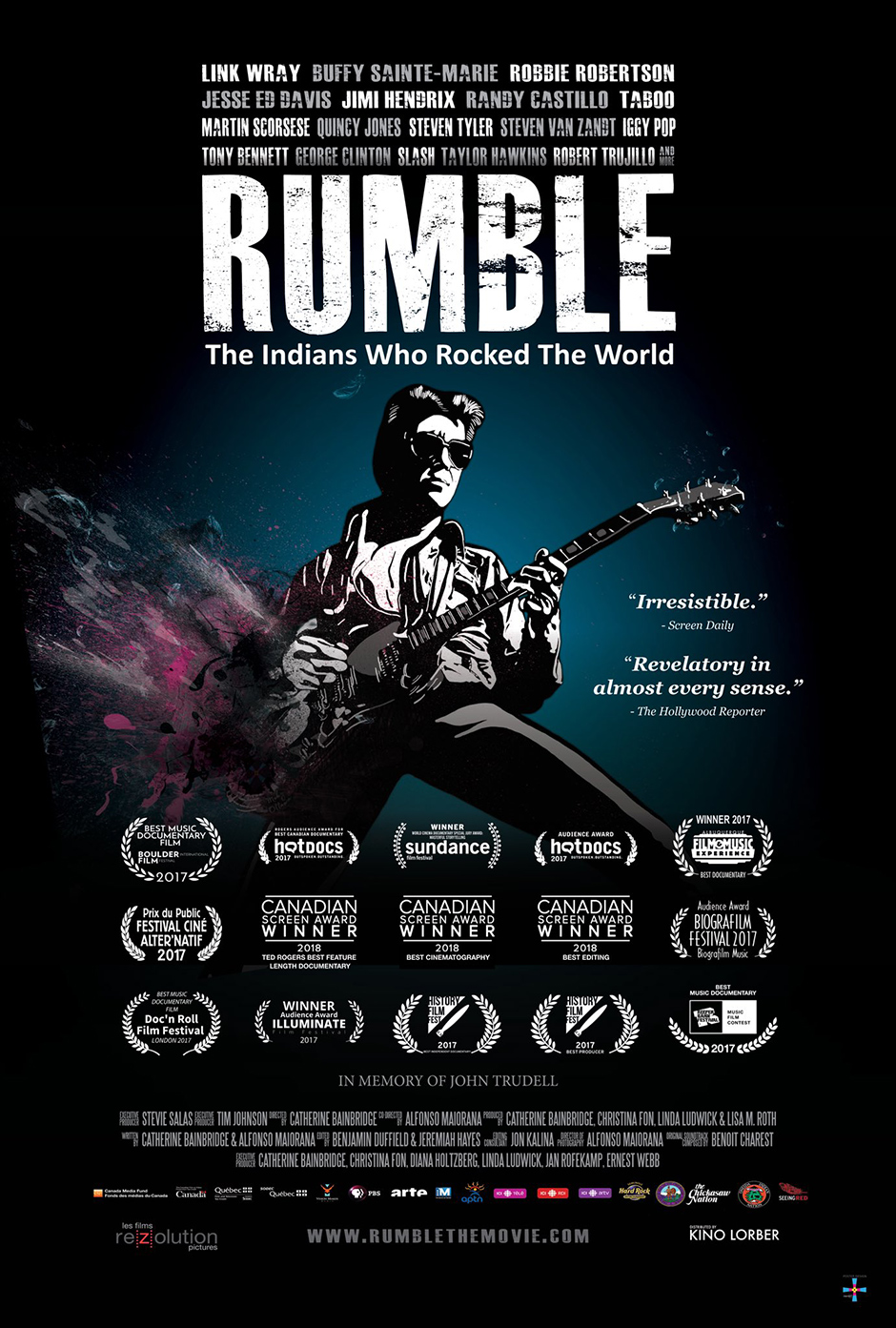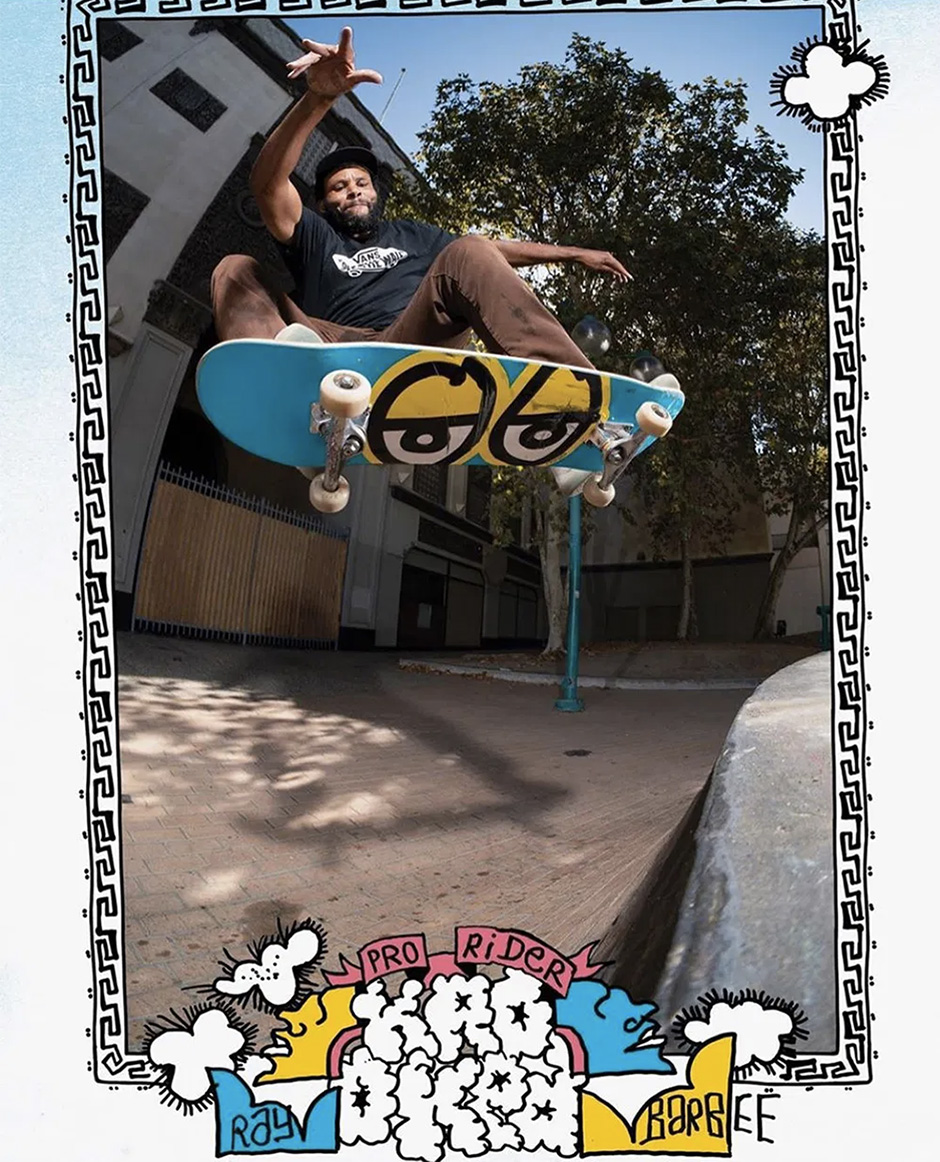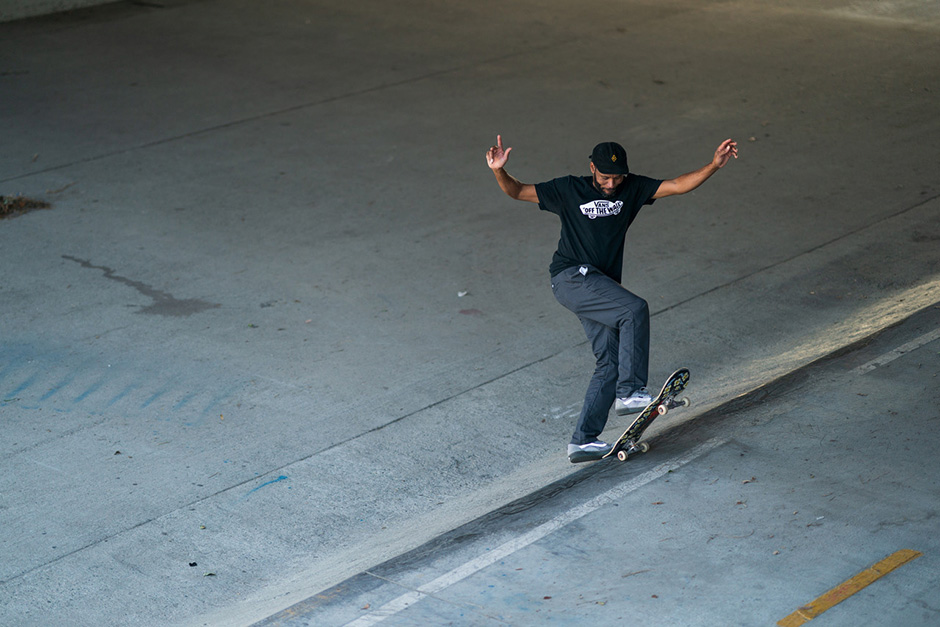Exposure to light. Ray Barbee out making it happen with Anthony Acosta / Interview By Jacob Sawyer
When I learned that Ray Barbee was keen to get on the phone with me for an ‘Offerings’ interview, I was excited to be getting the chance to speak with him. I wondered at first whether I should use this opportunity for a traditional career-spanning interview, but then thought a little deeper about his unique position in our culture, and his continued influence upon it. From my first experience of seeing him skate as a no-complying, kickflipping am in a lesser celebrated video we talk about later and his following career, to his releases on Thomas Campbell’s record labels and his incredible photography, Ray has been consistently, constantly creative and never less than completely inspiring. He’s given back to skateboarding one hundred times over and we could all learn from his drive and relentless passion.
Approaching his 50th birthday, Ray recently turned pro for Mark Gonzales’ Krooked. Mark and Krooked seem like the perfect accompaniment to Ray’s skating, his music and his mind. There’s clearly no need for a retrospective when there’s so much going on right now, and who better to turn to for inspiration and recommendations than one of skateboardings pioneers whose creative output is continually evolving. That being said, his video choice places us right at the very beginning of his story anyway so we covered a lot of ground…
Future Primitive – Powell Peralta (1985)
It’s sick that you chose this, it’s not the video you are usually asked about. Tell us about Future Primitive. Do you remember the first time you saw it, was it when it just came out?
Yeah I totally remember the first time I saw it, I’m not sure how long had been out before I saw it. I got into skateboarding when I lived in San Jose in California. I started skateboarding when I was 12 years old. I got into it because of a neighbourhood friend who I always hung with. One summer in between 6th and 7th Grade he got a skateboard for his birthday. I’d seen skateboards before him getting one for his birthday but they were always those banana boards, that’s what we would call them, people now would know them as Penny boards. Those just seemed like toys, they were Flexi and plastic and didn’t grip, the wheels were soft and barely moved. That was my perception of skateboarding, through the banana boards my friends would have in their garage in the mix with the other toys, basketballs, hula hoops, roller-skates and what have you.
So my buddy gets this skateboard for his birthday and his dad grew up skating the skate parks of the seventies. It’s his dad who gets him the present and he gets him a legit skateboard. It was a Variflex Vectra and I’ll never forget just seeing that thing and being enamoured with it at first sight, like “Whoah! That’s a skateboard”. Knowing that it had nothing to do with the banana board. So anyway I had an interest and I wanted one. Basically I got his dad’s old skateboard from the park days that he had in the garage. When I think about it, it’s so rad that he gave it to me. It was a Sims Wood Kick and I wasn’t a banana board but it wasn’t one of the newer boards, it was split the difference but I was hyped just to have something and have it be wood and not plastic.
they pretty much embraced us into the brotherhood and now we are into this world of skateboarding that I didn’t even know existed. Part of that was us watching these videos and the video we would watch was Future Primitive
So we go back to school in 7th grade and we link up with the skaters there and they pretty much embraced us into the brotherhood and now we are into this world of skateboarding that I didn’t even know existed. Part of that was us watching these videos and the video we would watch was Future Primitive. That video was my window into pro skateboarding.
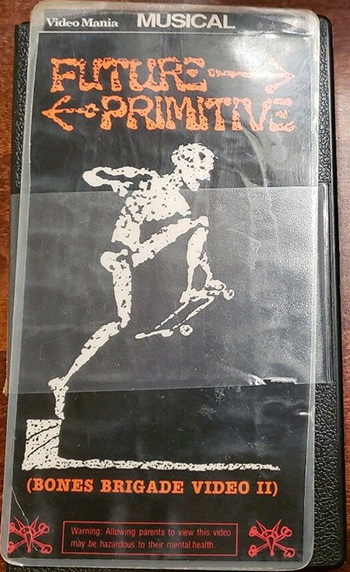 So it was on repeat.
So it was on repeat.
It was one of them, the main one, that was the best one. The Vision video SkateVisions is another one we would watch with Gator hopping fences to skate the ramp and Lester breakdancing. But we all thought Powell Peralta was the best. Future Primitive was our favourite. We loved the personalities, we loved the dudes but we were super inspired by the footage of them skating Del Mar and then Upland and then the footage of them skating Lance’s ramp.
I felt like those sections were the ones that we would always have on repeat. Rather than watch the whole thing through, before we’d go and skate the ramp we would fast forward to the Del Mar contest or the Upland footage or the footage of Lance’s ramp. That would get us all hyped and then we’d go and skate the half pipe we all had.
Vert skating is what you drew inspiration from.
Yeah when I started skateboarding in the 80s you know in ’83 or ’84 it was the tail end of the backyard ramp era. I got into it after the skate parks of the seventies, they were already closed down. When the skateparks closed down, guys that were able to built ramps in their backyards. So when I got into skateboarding, it was during the end of that time and that’s what we were skating, skating ramps. So with Future Primitive and those videos we were hyped to see the ramp part.
Is there anything in there you can pinpoint which you emulated and directly led to you learning something?
Yeah our repertoire and what we learned on the ramps came from watching those sections. You have to remember with the ramps and the repertoire, so many tricks were already laid out and were tricks we were seeing in the magazines also. They kind of functioned more as a reminder or a road map of what your next trick is to learn. We were so low in it that we were still trying to learn the basics, there was nothing we could directly grab from their level we were just learning. We knew about backside airs, frontside airs, we knew about indy airs, lien airs, lien to tails, inverts. We already knew about that stuff just from the local skaters and from the magazines. I guess what I’m trying to say is that we were still in the level of trying to learn that stuff so watching Future Primitive was watching that stuff function at the highest levels. It wasn’t something we didn’t know about because we had seen it but it was stuff we just couldn’t do as good as them Hahaha!
That ‘How They Fly’ section is mesmerising, Tony Hawk stuff in slow motion.
Tony’s stuff you couldn’t even begin to try and emulate it. There were still progressive tricks which blew us away but we were stuck trying to learn the basics. What I remember getting from it was just being stoked and inspired to keep going with learning the fundamentals, the tricks we could do. We couldn’t get into finger flip indy’s and things Tony was doing.
Was Tony Hawk the guy you looked up to because he was closer to your age?
I dug them all, It’s kind of like the Beatles where you have your dude kind of thing. But I just dug them all. There definitely was an emotional connection to Tony though. In helping you feel that there was somebody who gives you hope, of being a little dude who can hang with the older dudes you know what I mean? There was something I dug about each guy though. Living in San Jose there was already this feeling of “whoah Steve Caballero lives here!” Already an emotional connection “this dude lives in my town!” His style, I always felt like he was the most stylish dude in the crew, just how he made the tricks look. With Lance [Mountain], he was the dude who makes it looks so fun, he’s ripping too but he’s the dork of it all who made it fun and cool. Then Tony was the younger dude doing these crazy things that’s hanging with the older dudes, the big guys. I had a different emotional connection to each guy.
The building blocks for street skating are peppered throughout the video from Tommy Guerrero skating the avenues to Natas doing wallrides.
Totally, what it also served as was a roadmap for what you do when you’re not skating a ramp but still want to be on your skateboard. At that point that’s kind of what it was. It was a secondary thing and the primary thing was vert. Vert was primary and what you did in the streets was secondary. That video kind of gave you a bit of a roadmap to what the secondary aspect looked like when you couldn’t skate the ramp. Here’s what you do, you go skate curbs, you mimick vert in the streets. That’s what they were doing in Future Primitive in the ditches, or Lance with the railslide. That’s how we absorbed that, let’s go dork out on some curbs or whatever but it was always a secondary thing.
At that time with Tommy [Guerrero], for me personally it was too subtle for me to see at that time, this one person on the team outside of Rodney Mullen. With Rodney you knew his primary aspect of skateboarding was freestyle. With Tommy it was a little too subtle and nuanced at the time for me to see that for him street skating was primary. My thinking wasn’t like that at the time so it didn’t really resonate until skateboarding started to shift for me towards street becoming primary and vert becoming secondary. Then it was very clear because you’re looking for dudes to be inspired by and you’d see that Tommy was primary street, Natas [Kaupas] was primary street, Gonz was primary street. These are street skaters and they’re pro for street skating. I didn’t sense that as much at the time because I wasn’t looking for that with Future Primitive. Fast forward to Animal Chin coming out and I’m already switched over to street being what I’m going for.
From watching that video religiously to getting on Powell and getting to skate Mountain Manor must have been a trip.
Oh for sure are you kidding Hahaha! To this day with all of it I’m like is this real? To this day I feel like I’m gonna get caught, get kicked out. You know when you get into a gig through the back door and you’re in the party, in the spot with everybody then someone asks you why you’re there, how did you get in, who do you know? To this day I feel like that with what I’ve been able to be a part of in skateboarding.
You came to London shortly after getting on Powell. My friend Ray has a memory of seeing you at a Cure gig.
Rad! Hahaha! That first time visiting London was a trip for me man. I wasn’t aware of the latency if you will. I just thought people all over were stumbling across the same kind of ideas. I thought skateboarding was functioning at the same levels everywhere for some reason or here’s what it was, I didn’t think about it. But when I went to London I didn’t see the connection of the videos to the community of skateboarding in various other parts of the world.
When I was in London I was tripping out because I felt like everybody was a year behind, they were skating from the last videos they saw. People were doing older tricks and we’d already got excited about other tricks. We have that no more, now it’s real time for everybody. But I didn’t realise the importance of the exposure of those videos. I remember being at Southbank and thinking it was so weird because in California everyone was stumbling across these new ideas.
It’s funny that the tagline for Future Primitive was the Craig Stecyk quote “200 years of American technology has unwittingly created a massive cement playground. It took the minds of 12 year olds to realise its potential” and you are one of the minds who ran with it.
Yeah it’s funny. I’m at the point now, or I’ve been here for a while where you get busted skating a spot and you’re older than the cops busting you. This sense of “what are you doing?’ How old are you and you’re riding this toy, you’re hopping fences and you’re skating? But skateboarding has got to a point where it has permeated the culture more than it ever has. So certain people are scratching their head and they don’t get that you’re almost 50 and you’re hopping fences to skate, older cops. But the younger dudes get it.
I had a cop the other day when I was skating some flat ground in this parking lot. He rolled up and I thought I was going to be asked to leave but he was like “let me see a kickflip”. I felt like tossing up a tre flip so I did and he said “that was cool but I wanted a kickflip” do you know what I mean? Now you have cops who grew up skating so it’s different now. It’s permeated the culture more than ever before so there is a little bit more understanding towards what a 50 year old is doing hopping fence to skate a school yard. But it would always crack me up when you would see them not getting it and asking what you’re doing and me being like “you have no idea dude, this thing is so fun!”
‘Remain In Light’ – Talking Heads (1980)
Did you pick this for its relevance now or it’s overall impact on your life?
I picked it because it’s a great album that will always remain great for me no matter the landscape or time frame. It’s just a great album man. What I appreciate about that album is a lot of things. The creativity and the mind of David Byrne and that collaborating with Brian Eno who I am a huge fan of. Then there’s their mutual excitement and enthusiasm towards African music, the inspiration from what Fela Kuti did with African rhythms. All of that stuff comes together to make what is a very special album for me. It’s very different from the pop arrangements and approach they had done prior. It’s very open and I love African rhythms so to hear them in that context and approached that way is so cool.
The first three tracks are so powerful because of that.
You just hear that heavy African rhythm, it’s the one. It sets it all up and you’re just in it. The way he had to write his melodies and the lyrics was way different because of the rhythms.
Wasn’t the album all written in the studio?
They jammed it out there and got all of the ideas for the music but his lyrics and the melodies he had to go back and write that all for it.
Would you say this has influenced how you approach your music?
Yeah I think the thing I got really inspired by is exploring music from other cultures and allowing that to play a big role in your ideas. Also the role it plays in you having to be challenged with composing differently, hearing melodies in a different way. Being challenged with different rhythms that call for you to approach your ideas in a different way than you usually would. The way it can repurpose old ideas. It’s totally an influence because it has inspired me to look for that and put myself in that situation to function that way. In a lot of ways that’s huge when it comes to the last album I did with Thomas Campbell’s label Um yeah Arts called Tiara For Computer.
I think the thing I got really inspired by is exploring music from other cultures and allowing that to play a big role in your ideas
I wanted to draw a parallel to that because on the Talking Heads album it’s the West African rhythms which open up this sonic experimentation, and Johnny Herndon’s drumming on your album makes the space for your experiments with analog synthesisers.
That’s an accurate kind of parallel. Like most things that inspire, it doesn’t have to be a very literal draw from what they came to. I draw inspiration from things from the approach, the spirit of it and the idea not literally the thing itself. The approach of David Byrne and Brian Eno to me it’s like they were saying “let’s do an African album” basically. It’s drawing inspiration and it starts somewhere. What I get inspired by and what validates it to me is that you can start somewhere and trust that it will turn into your own thing as you let it be what it’s going to be. It’s good to start from somewhere that’s exciting. But where you end up may not be super literal to it. I listen to Remain In Light and I hear just as much Talking Heads as I do Fela Kuti. The inspiration becomes a launching pad but it’s not the thing itself, you’re not trying to emulate the thing itself, that’s boring and unexciting, to me that’s inspiration maybe not functioning, it just becomes copying so one is not needed, I’d rather just have the original.
When I think about the synth album the parallel is the idea of getting excited about something and that thing being something you haven’t explored before which allows you to go somewhere you haven’t gone before. I didn’t go into that album thinking I want to do what Talking heads did with African rhythms or African music but I wanted to do what David Byrne and Eno did with getting excited about something and using that as a launch pad and for me that launch pad was an analog synthesiser called a Korg MS20 Mini and from that launch pad that album came about. The launch pad was to explore synthesis. Remain in Light’s launch pad was to explore African Rhythms and mine was to explore analog synthesis. It was very influenced by how people explored synthesis in the seventies, the seventies jazz dudes.
It was a different approach to now where electronic music is on a grid, like a sequencer. Back then it was more about being brought into live instrumentation, the human touch with it. I was very interested in exploring that. I was excited because right away I saw that it was something I could do with Johnny [Herndon] that would allow Johnny to function in his strong suit, being very expressive and emotional behind the kit. I love that aspect of his playing, he is a very emotional player so I saw where Johnny could just get in there and do what he does best. Just be open and I just wanted it to be wild. The inspiration is from the spirit that was very apparent in David Byrne and Brian Eno’s approach to Remain In Light. They got excited about something and that became the launch pad to go off into the thing. Where they ended up, man it’s so beautiful.
Developing a new language together.
I guess you could think of it as like finding out about a new spot that you’ve never skated before and you’re excited about going to skate it. Then you go there and you learn a new trick you’ve never done before because the spot afforded it. It’s the two together that allow you to have that experience. The reason I say a spot is because a lot of artists think that way. People who set up different inspirations for foundations or launch pads. Each album becomes a new spot you know what I mean? Because the next album wasn’t that. It wasn’t something which set them off on a path where they were known as a certain type of band now. They’re looking for that next thing. They might keep some of it but they’re pushing for something else at the same time.
The Mind’s Eye – Henri Cartier-Bresson (1999)
Tell us about this book…
Choosing the book was a tough one because I’m so lazy nowadays and there are so many audiobooks out there hahaha. I read the Bible a lot but with other stuff, I’ve always been more into instructional kind of books. Learning how to do something with a synth book for instance, something full of information. I would choose that over pleasure reading if that makes sense. But this is a book I dig which kind of falls into that category too.
Did this book kind of put into words your own experience with photography?
Henri Cartier Bresson is like a giant for me for photography and the type of photography I enjoy. Photography where you’re capturing a moment, you’re finding what’s special and you’re able to free the moment. It’s what I love about photography, it’s a time freezer but I love how if you catch the right moment how special that little fleeting thing can be because of what this box which is capturing light has the ability to do. I think that he does that better than so many people. He’s the guy who showed the potential for that. So I was very interested in reading his ideas about photography because his approach excited me and played a huge role in how I like to try to capture my life.
His approach to taking photos is liberating in terms of kit right? Here’s a camera now go…the rest is all you.
He never talked about kit or tools outside of just learn it, have it, get it out of the way. It’s the last thing you want to mess around with when you want to get your idea across or when you want to strike if you will hahaha. You don’t want to be fiddling with your exposure or your focus. It’s like us, if we want to do a trick we don’t want to be fiddling with how to ollie, we already want to have that happening. He talks about technique over gear, he was a painter and he came from an era of impressionists and the surrealist movement. He was very influenced by paintings and that approach. Impressionist painters especially were making art out of the mundane, out of the every day scene. He got excited about how the camera can function in that same way. He was really into composition and geometry and that tied with the moment. He called it “the decisive moment”.
He loved to walk around with his camera and create these kind of paintings with his camera, he called it his sketch pad. Playing with geometry and finding something special in the organisation of everything at play. Expression, body language, where that sat in terms of composition in the frame and how that translates as a whole. Because he is one of the forefathers of that approach, it’s really cool that he wrote this book to give you an insight. The method to the madness.
Henri was a painter first so his work was greatly informed by that as you say. You had already studied and been shot by the greatest to ever do it so lots of iconic images had already contributed to your expectations of what a photo should be.
Definitely because of growing up in such a rich community of photographers, as you’re saying skate photographers. For me when I switched from using a Yashica T4 point and shoot and finally got a manual film camera, the desire for me was to get into the dark room and make dark room prints. That was a huge part of the switch, just loving the craft of it. I think I respected it so much because of enjoying when I would go out with Tobin Yelland or Gabe Morford or Bryce Kanights in the late 80s/early 90s.
Those guys would either have dark rooms at their house or have access to a dark room somewhere at the magazines or at a facility and they would give me prints. Or I’d see the prints they had made themselves at a skate art show at a skate shop or a gallery for instance. I just respected all of it like “you printed this?’ and just loving the way it felt. I love black and white, I love that it’s abstract and we don’t see in black and white so by default it’s interesting and special to me.
It’s that DIY thing we have as skateboarders also, you did it all, you shot it, processed it and printed it. All of that stuff, I was enamoured with it, I had so much respect for the craft of it. The printing for me was a huge part of it. Henri Cartier Bresson played a huge role in how I approached what I shoot and because I can’t draw a lick it is my cheat to be able to function in that sort of a way. Seeing a print from something, I don’t use brushes I use light instead. Getting back to the book it was important for me to get these insights from the master and him expressing it in a way which isn’t just a ‘how-to’. It’s not an instructional manual. He has the ability to express it in a way which is, for lack of a better term, poetic.
it was important for me to get these insights from the master…He has the ability to express it in a way which is, for lack of a better term, poetic
His drive and the thought process behind it.
A deeper insight into his heart I guess. I get more of a sense of the joy, more of a sense of what he is after and what movves him and drives him.
One quote from him is “What I am looking for, above all else is to be attentive to life”. You developed that part of your craft shooting with a T4 and then realised you wanted to have more input on the images you were making. Is there a moment, a photo where it was a revelation, like “I did that” and it all came together?
It all comes from that DIY thing, it’s all within that desire,. The part of the craft that drew me to it is that every step of the way I can steer it, I can control it. I don’t have to rely on somebody else to interpret what I’m feeling or what I want to convey. So if there is a moment, that moment is the process itself. That moment is embedded in the process. That’s the joy of it for me, the joy is from the capture to the print. That to me is the take off and the landing of the trick, then the joy comes from “I landed on the bolts”. The joy is in capturing the journey and then being reminded in the completion of the capturing of the journey is the feeling of accomplishment in the print. That’s where you nail it.
For me and my wife with both of our kids we didn’t know what we were going to have. I can’t really speak for her but I know for me I was so excited about just the flood of emotions in that moment. The flood of emotions in the miracle of seeing a child being born and then hearing “oh it’s a girl” or “oh it’s a boy”. Just wanting the impact of that all at one time, give it all to me at one point. To me in the print, when I look at a print I’m brought back to a similar point. Multiple things all coming together is what I’m trying to say. So when I look at my print I’m brought back to a moment where we had so much fun or whatever emotions are tied to the memory captured.
But what I’m trying to say is that there are multiple memories, the memory of the moment itself, the memory of the enthusiasm when I finally nailed the print in the dark room and what it took to get there. I’m flooded by all of those things all at the same time again in a similar way. Excited again by remembering the moment of shooting it, the capture. Excited again by looking at how long it took for me to get that sky to come in for instance and knowing right there is when I got it. It all works together for me.
Being present and in the moment, squared.
Multiple things to remember to have that enjoyment again, you’re not just remembering the capture, you’re remembering the moment of the capture and you’re remembering the printing. The only reason I made the parallel with not knowing the gender of your child at birth is because at that moment you’re being hit by the miracle of the birth itself and the news of what you’re having, it’s kind of a one two punch of joy.
RUMBLE: THE INDIANS WHO ROCKED THE WORLD (2017)
Tell us about this documentary.
It’s about the Native American influence in pretty much most genres of music. Something that’s never really been highlighted or talked about but is very prominent and actually played a huge role in various approaches to music. My mum is from Alabama and my dad was from Arkansas. On my mums side there was a lot of Creole in her family. A lot of my relatives on my mums side live between Alabama and New Orleans. For me I’ve always been intrigued and interested in the black and Native American or Indian connection if you will. Because in New Orleans you have Mardi Gras but at this point and for a while that has become like Spring Break.
But when you think about it, the rituals and the culture where you have people basically dressed like Indian chiefs with the feathers, that connection again within that culture. The documentary does a great job of showing you the roots of that. The coming together of the rhythms, Charlie Patton who is the godfather, so many blues guys cite him as the originator of that approach
The Delta Blues.
Yeah and he is a Native American. It does a great job of bringing that to light, so many people. Robbie Robertson for instance and you hear their stories of how they had to keep that on the DL.
It does a great job of educating and reinforcing the cultural importance and history of Native Americans in music
Play down their heritage.
Exactly. But then it talks about how certain guys inspired other guys to not play it down and to be proud about it. There are so many parallels with so many other ethnic groups who have been done wrong basically. There is a large part of me that doesn’t want to spoil things too because that is what is such a rad part about this documentary. I don’t want to ruin it for anybody who hasn’t seen it and wants to. It does a great job of educating and reinforcing the cultural importance and history of Native Americans in music.
Unsung history.
Yeah dude, it’s beautiful man, it’s beautiful. It’s stuff that nobody knows about or talks about or realises. Its awesome because it’s allowing those contributions to not be lost.
Ray finally skating the San Berno banks for his welcome to Krooked ad from Thrasher November 2020. Photo: Anthony Acosta
We were all super stoked to hear the news that you are now on Krooked. One of the first bits of good news in 2020. It just makes perfect sense and we were so hyped to see that ad. Are you excited, does it feel like this opens up a new chapter of skateboarding almost?
Oh man I’m super excited because for me the opportunity to be a part of something with those guys. I’ve known [Jim] Thiebaud and Tommy [Guerrero] and Mark [Gonzales] since the Powell days. To have that history and to have that relationship and to have that admiration and trust. Where we are all speaking the same language of how we perceive skateboarding, that means everything to me. It’s amazing to to be a part of something where we can just do fun stuff and not have to labour over translation issues you know what I mean? Hahaha! I’m super excited, Jim told me “Ray we just want to support you and do fun stuff”. That’s a dream come true, that’s what everyone wants to hear.
Full circle to skating with Mark in a parking lot again at some point.
Oh man yeah I’m looking forward to the back end of all this stuff and being able to roll around with Mark.
Does your first board come with a Flexi Disc?
It didn’t work out for the Flexi Disc to be wrapped with the boards unfortunately so what they have been doing is just sending them to the shops and allowing the shops to distribute them with the purchase.
It’s a song you wrote specifically for that?
Yeah it’s a little song made during quarantine called ‘Exposure To Light’. That’s something that can be left to interpretation but at the same time it’s leading towards certain interpretations at the same time. It’s open but not as open as other things, it’s half, It kind of splits the difference. It could be photography, it could be hope, it could be whatever, you know? At any rate one of things is that I’m very grateful for the lillies or the roses in the thorns of everything that’s been going on. Spending a lot of time with family but having time also to be playing music and recording. This is a song that comes out of that time.
Do you have any other projects on the cards you’re excited about and want to talk about?
You know what’s so crazy. I’m grateful for these projects I’m working on and I’m super excited about them but they won’t come out till this time next year hahaha. One of them will be 2022 but we have to get them done now to be out for then. I will say this though, they are with Vans and I think people are going to be surprised in a good way. I don’t want to assume people are going to dig it but I know they will be surprised Hahaha!
I loved it in your interview with Sage Elsesser when you talked about skateboarding being the quilt and all of the other interests that make up skateboarding being the patches which make it and wanting to see more and more of those patches. That’s what this interview is all about, sharing those interests.
Yeah we have such a rich culture man and it’s so steeped in being ‘in house’. It’s ‘in house’ when you don’t have to hire out and I love how skateboarding is that, it strives to function that way. One of the beauties of it and what makes it special is that the guy shooting the photo, the guy filming, the guy making the music, the guy editing is a skateboarder and can be a skateboarder you know what I mean? There are very few things, industries that can function like that which are that diverse in their talents and abilities and I love that about skateboarding, I love that about the quilt.
Those patches are just as strong as a solid quilt if you will, meaning that these photographers, videographers, artists, editors. They can hang with these abilities outside of skateboarding. It’s not like basketball where someone might say Damian Lillard is a decent rapper for being an NBA player, someone might dare to say they are decent for being a basketball player but they can’t hang with real MC’s. But I feel like in skateboarding they can hang, Spike Jonze has shown that, Jason Lee has shown that you know what I mean? Grant Brittain to me can hang with a photographer outside of skateboarding who is heralded to be a master lensman. I guess what I’m trying to say is it functions at a high level and I love that.
Do you have any closing words for the community?
Hang tough, we’ll get through all of this craziness. Hang tough and seek hope, hope is important, my hope is Jesus.
At this point after the interview I shared with Ray that my Future Primitive, the first skate video I watched again and again was Attack. This was the 1989 Bomb The Bass soundtracked release made by Stacy Peralta and Tim Simenon (released through Virgin) which followed Public Domain. I had to frame the video for him and explained his appearance. While Ray hadn’t seen the whole thing through and was embarrassed about skating around with a guitar and lounging on his amp while being ollied over, I assured him it was one of the coolest things my young mind had ingested. Having explained that we had access to this video because it was affordable and you could buy it in HMV led to an interesting conversation. I have added this as an afterword because it’s full of insights much better shared than in a voice recording…
Accessibility is everything. For me the biggest influences on my skateboarding were cats who lived in my town that I had access to, they had the biggest impact. My friend Randy Smith had by far the biggest influence on the direction of my skateboarding. People who I skated with, the local guys, people who were accessible to me. Accessibility is everything, the fact that you had access to that video through the record store and the role that it played for you, it was attainable and there’s something to first impressions. When you’re seeing something for the first time and the emotional connection you have with that, it excites you in some way, there’s a level of value to that thing. It’s interesting that it doesn’t diminish. Your emotional connection to it doesn’t diminish even though the landscape around you can be greatly different, there’s still an emotional connection to that experience.
That’s why you an have dudes on Instagram still hyped on those early videos or still hyped on the pros who aren’t functioning anymore in what initially drew them to them. The value is still there and doesn’t diminish because it’s tied to that emotional connection. It’s really interesting how we are that way.
We’re lucky to have something like that.
I’m grateful to it because it allows things to not be forgotten and the contributions to not be diminished. That’s why that film Rumble is awesome because it’s preserving those contributions. For us with skateboarding, Instagram has served in a way for people to be reminded of the value of those experiences and emotional connections. Plus they’re able to share that with one another “check out my old board which I found”. For older cats who already have that emotional connection, a lot of that has been laid out.
They’re all having mini reunions, like skateboarding high school reunions. It’s like showing up to a high school reunion with all of your memorabilia, Instagram functions like that. “Check out what I found” then that reminds people of what they’ve got stashed away. It’s really cool but it’s all centred around the value of this emotional connection. It’s super cool, super special and I’m biased because it’s all I know. I wonder if other things function this way. I guess sports has trading cards and things like that but it’s really cool to experience it through this thing that I dig.
Ray frontside bluntslides on home turf shortly after this interview. Photo: Anthony Acosta
Thanks for everything you’ve done and continue to do for skateboarding.
I’m so grateful to be a part of it and have the opportunities. I just thank the Lord, thank you Lord for allowing me to stumble across what I stumbled across when I did. I’m just a dude who got excited about skateboarding like everybody else and stumbled across some tricks and had the opportunity to be a part of something that let those tricks leave San Jose, or actually Tustin, at that time I was living in Southern California.
I guess what I’m trying to say is I’m very grateful to the Lord because it’s like all of those planets being in alignment. The accumulation of these ideas coming out at a time and being a part of something. All of that is what allowed me to do that and for you to even want to do this interview now. I’m just saying I’m very grateful because it has a lot to do with so much of that stuff more than the actual ability to ride a skateboard Hahaha! I always figured people all over are probably stumbling across the same stuff. I’ve always had that thought, there’s cats who are better than Jordan out there but they didn’t have the opportunities or their deal and choices all play a role.
I did a 360 Shuvit off the nose the other day and thought of you. I’m sure lots of other people are having similar thought processes with each no comply.
Sick! One thing I’m super grateful for is the accessibility all the tricks I stumbled across, that plays a huge role too. It’s like punk rock. I kind of see myself as the guitarist on stage of a punk gig where the person in the crowd could very easily be the person on the stage. It’s accessible, they’re like let me get a guitar and start my own band. The fact that people could watch that part from Public Domain or Ban This and it was within reach for them to figure out and learn themselves, I think that was huge.
I kind of see myself as the guitarist on stage of a punk gig where the person in the crowd could very easily be the person on the stage
Because it allows people to feel a part of something, it wasn’t so beyond reach that it goes over their head and they can’t be a part of it. The fact that people learned things because of it meant that it was reachable which I appreciate. It’s to a point now where it’s so heavy, the tricks are so heavy. I remember it getting to a point where it didn’t function to inspire anymore it was more discouraging. It takes a peculiar ability to be able to hop in and do that.
I’m still inspired by a Rodney Mullen part from any time in history though and they’re baffling.
Totally, but a Rodney part when you’re trying to freestyle? I don’t know. When you think about Rodney’s role. The street skating that we were doing and what was formulating in our heads was a mixture of Natas, Tommy, Gonz and it had Rodney ideas in there. We looked equally to Rodney for ideas. 360 Shuvit, Gazelle, we were looking at Rodney for that stuff and that was the switch over. Instead of looking to the Bones Brigade, meaning Lance and Cab and those dudes. We weren’t looking to them for street ideas we were looking to Rodney as much as to Natas and all those guys. If you think about it that’s the vocabulary, it came from those dudes to me and Rodney’s right up in there. We jumped off what Rodney was doing basically, appropriated it to a bigger board.
Many thanks to Ray for taking the time out of his busy schedule to do this interview and to Anthony Acosta for the photos. Stay tuned for Ray’s first two Pro boards from Krooked which will be arriving soon.
Previous ‘Offerings’: Zach Riley, Casper Brooker, Ryan Lay


